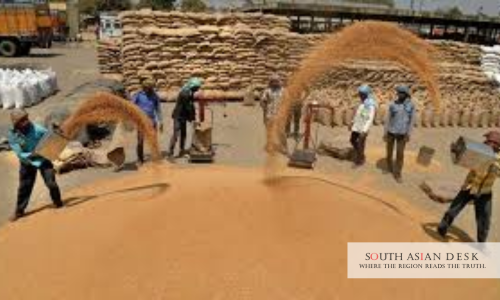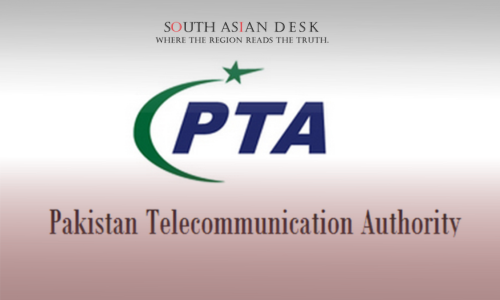New Delhi: The Indian government approved a hike in minimum support prices for all mandated rabi crops on Wednesday, October 1, 2025. This India rabi MSP hike targets six key commodities for the 2026-27 marketing season. Officials say it ensures returns at least 50 per cent above production costs. The move comes amid calls for stronger farmer support. It promises direct payouts worth Rs 84,263 crore.
Why the India Rabi MSP Hike Matters
This development holds significance beyond India. South Asia relies on stable grain supplies from the region. Wheat and pulses from India influence prices in Pakistan and Bangladesh. Higher MSPs could stabilise cross-border trade. They promote crop diversity, reducing import needs for oilseeds and legumes. In a climate-vulnerable belt, such policies build resilience. Farmers in Punjab and Haryana, key exporters, stand to gain most. The hike aligns with global food security goals. It addresses monsoon shortfalls from 2025. Overall, it bolsters regional agricultural ties.
Details of the India Rabi MSP Hike
The Cabinet Committee on Economic Affairs, chaired by Prime Minister Narendra Modi, greenlit the increases. The India rabi MSP hike covers wheat, barley, gram, lentil, rapeseed and mustard, plus safflower. Officials fixed rates to cover comprehensive costs plus 50 per cent profit. This follows the 2018-19 budget commitment.
Union Minister Ashwini Vaishnaw briefed reporters. He said: “This increased MSP of rabi crops will ensure remunerative prices to the farmers and incentivise crop diversification.” The minister highlighted the 50 per cent margin principle.
Estimated procurement stands at 297 lakh metric tonnes. That translates to Rs 84,263 crore in farmer payouts. The India cabinet approves Rs 84,263 crore rabi crops package 2025, focusing on direct benefits.
Crop-Wise Increases Under India Rabi MSP Hike
| Crop | Previous MSP (Rs/quintal) | New MSP (Rs/quintal) | Increase (Rs/quintal) | Percentage Rise |
| Wheat | 2,425 | 2,585 | 160 | 6.6 |
| Barley | 1,980 | 2,150 | 170 | 8.6 |
| Gram | 5,650 | 5,875 | 225 | 4.0 |
| Lentil (Masur) | 6,700 | 7,000 | 300 | 4.5 |
| Rapeseed & Mustard | 5,950 | 6,200 | 250 | 4.2 |
| Safflower | 5,940 | 6,540 | 600 | 10.1 |
Data from Press Information Bureau. Safflower sees the sharpest absolute jump at Rs 600 per quintal. Lentil follows with Rs 300. Wheat’s 6.6 per cent rise offers the highest margin over costs at 109 per cent.
Margins and Economic Impact
The India rabi MSP hike guarantees profits above production expenses. Wheat farmers get 109 per cent return. Mustard secures 93 per cent. Lentil hits 89 per cent. Gram stands at 59 per cent. Safflower at 50 per cent. Barley at 58 per cent. These figures use all-India weighted averages.
Procurement agencies like the Food Corporation of India will buy at new rates. This prevents distress sales during harvest. The 2025 kharif season saw delays due to rains. Rabi sowing starts in October. Higher prices encourage planting oilseeds and pulses. India imports 15 million tonnes of edible oils yearly. Local boosts cut that gap.
The India cabinet approves Rs 84,263 crore rabi crops package 2025 to inject funds into rural economies. States like Uttar Pradesh and Madhya Pradesh produce 40 per cent of rabi output. Farmers there eye better yields from hybrid seeds.
Historical Context on MSP Mechanism
MSP dates to the 1960s green revolution. It shields growers from market crashes. Governments announce hikes biannually, for kharif in June, rabi in October. The 2018 promise locked in 1.5 times cost coverage. Since then, average hikes hit 6 per cent yearly.
Past rabi seasons paid Rs 70,000 crore in 2024-25. This year’s India rabi MSP hike pushes totals higher. Protests in 2020-21 demanded legal MSP backing. The government cites procurement data as proof of commitment. Over 90 per cent wheat and 70 per cent rice get bought at MSP.
In South Asia, similar floors exist in Pakistan’s wheat policy. Bangladesh uses incentives for boro rice. India’s moves set benchmarks. Climate shifts demand adaptive pricing. The 2025 floods hit pulses hard. This hike aids recovery.
Challenges in Implementation
Not all farmers reach procurement centres. Smallholders sell to middlemen at lower rates. The e-NAM platform links 1,000 markets digitally. Yet, awareness lags in Bihar and Rajasthan. Officials plan awareness drives by November.
Storage capacity stands at 90 million tonnes. Rabi needs 30 million. Shortfalls could force open-market sales. The government allocates Rs 5,000 crore yearly for silos. The India rabi MSP hike relies on swift execution.
Experts note diversification gains. Pulses cover 25 million hectares. Higher MSPs lift yields to 800 kg per hectare from 650. Oilseeds like mustard could rise 10 per cent.
What’s Next for India Rabi MSP Hike
Sowing peaks in November 2025. Agencies gear up for 2026 harvest. The agriculture ministry monitors via satellites. Budget 2026 may add insurance covers. International talks on WTO farm subsidies continue. India pushes for flexibilities.
This India rabi MSP hike sets the tone for resilient farming. As South Asia faces water stress, such steps foster stability. Farmers watch for rain forecasts. The cycle renews with promise of fair returns.
Published in SouthAsianDesk, October 2nd, 2025
Follow SouthAsianDesk on X, Instagram, and Facebook for insights on business and current affairs from across South Asia.






